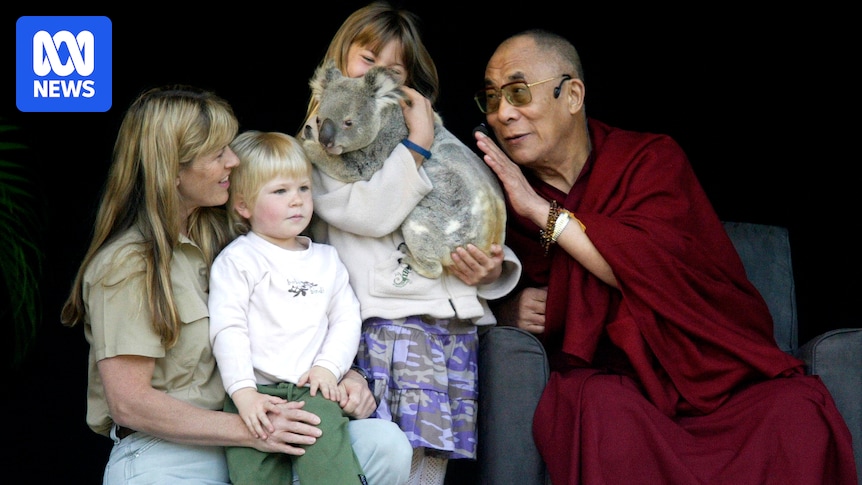
The 14th Dalai Lama marked his 90th birthday with a significant announcement concerning the future of the Tibetan Buddhist spiritual tradition. On Wednesday, through a video message, he confirmed that the institution of the Dalai Lama would continue after his death, dispelling rumors that he might be the last of his lineage.
This announcement was not only a source of comfort for his followers but also a strategic message directed at political forces in Beijing. As Tibetans and Buddhists worldwide gathered to celebrate this milestone, they also expressed their admiration for the Dalai Lama, a longtime advocate for the Tibetan people.
The Journey of a Spiritual Leader
The Dalai Lama’s journey began in a small, remote village in northeastern Tibet. Born Lhamo Dhondup, he was identified as the reincarnation of the 13th Dalai Lama at the age of two. After undergoing spiritual and supernatural tests, he was confirmed as the “tulku” or Dalai Lama incarnate and was formally recognized as the 14th Dalai Lama in 1939, taking the name Tenzin Gyatso.
Despite his elevated status, he describes his early life as being treated like “an ordinary young monk.” His monastic education included Tibetan Buddhist philosophy, logic, fine arts, medicine, and poetry. However, his life took a dramatic turn in 1950 when the newly established People’s Republic of China invaded Tibet, leading to his eventual role as head of state at just 15 years old.
A Perilous Escape
By the late 1950s, tensions between Chinese and Tibetan representatives had escalated, culminating in the 1959 Tibetan Uprising. Amidst rumors of a Chinese plot to kidnap him, the Dalai Lama made a daring escape from Tibet, disguised as a soldier. Accompanied by guerrilla fighters, he journeyed on foot through the Himalayas to India, where he was granted asylum on May 31, 1959.
“Everything was uncertain, except the compelling anxiety of all my people to get me away before the orgy of Chinese destruction and massacre began,” the Dalai Lama wrote in his autobiography.
In 1960, he established a base in Dharamshala, India, where he continued to advocate for Tibetan culture and rights.
The Middle Way Approach
During the Cultural Revolution, the Dalai Lama witnessed the destruction of Tibetan monasteries and the suppression of Tibetan culture. From his government in exile, he proposed the Middle Way Approach, advocating for Tibetan autonomy within China rather than full independence. This proposal aimed to protect the rights and freedoms of the Tibetan people while fostering harmony and stability.
“Our proposal is the best way to achieve harmony, stability, and unity,” the Dalai Lama stated in 2007.
Despite criticism from some quarters, including his own brother, the Dalai Lama has remained steadfast in his belief that this approach is the most viable path forward. However, the Chinese government has consistently rejected the plan, viewing Tibet as an “inalienable part of China.”
Global Influence and Recognition
Throughout his exile, the Dalai Lama has become a globally recognized figure, traveling extensively to promote interfaith dialogue and Buddhist teachings. His international influence was cemented with the Nobel Peace Prize in 1989, awarded for his nonviolent struggle for the liberation of Tibet.
“I’m Buddhist, [but] I understand the value of different traditions,” he told the ABC in 2008. “The ultimate source of a happy life and peace of mind is within ourselves.”
His teachings on compassion and kindness have resonated worldwide, contributing to the growth of Buddhist practitioners and institutions.
The Future of Tibetan Buddhism
As the Dalai Lama ages, questions about his succession loom large. In his recent announcement, he confirmed that the institution of the Dalai Lama would continue through reincarnation, with his charitable trust holding the “sole authority” to recognize his successor.
“No one else has any such authority to interfere in this matter,” he asserted.
However, the Chinese government insists that the next Dalai Lama must be approved by Beijing, a stance that raises concerns about the potential for a politically motivated appointment. The Dalai Lama has suggested that China might appoint its own Dalai Lama, a scenario that Dr. Lobsang Sangay, former leader of the Central Tibetan Administration, believes is likely.
“For Tibetans inside and outside Tibet, the one selected as per the instruction of the Dalai Lama will be the real one, and the one selected by the Chinese government will be a fake one,” Dr. Sangay stated.
As the world watches, the future of Tibetan Buddhism and its spiritual leadership remains a critical issue, with implications for the preservation of Tibetan culture and identity.





